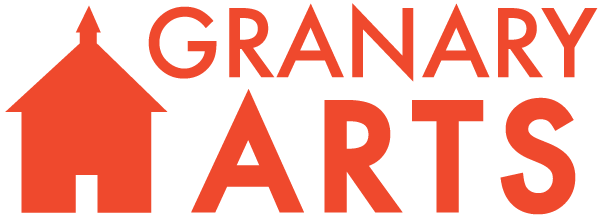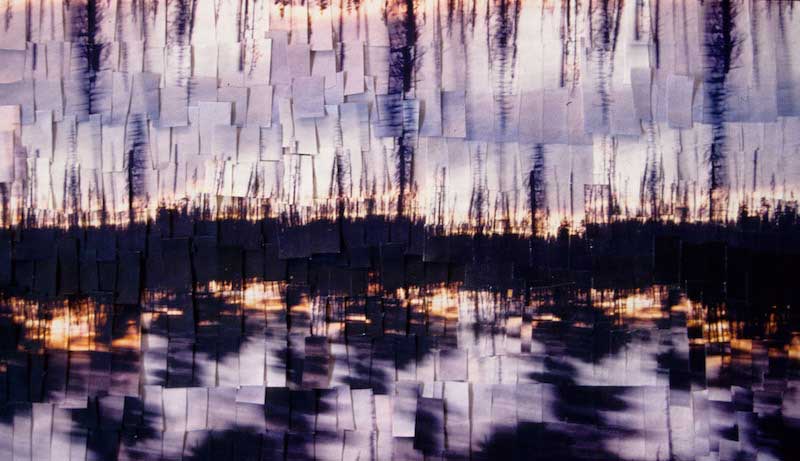GOING THIS WAY / Curated by Kelly Brooks
David Baddley / Mark Biddle / Erin Coleman-Cruz / Kim Gordon / Caroline Lavoie / Joseph Ostraff
November 1, 2014 - February 6, 2015
Going This Way is an exhibition of six contemporary artists—Davis Baddley, Mark Biddle, Erin Coleman-Cruz, Kim Gordon, Caroline Lavoie, and Joseph Ostraff—whose work looks at the traditions and implications of American vacation travel, its ties with leisure and risk, and its shaping of American identity. Whether we speed through vast landscapes in the comfort of an air-conditioned car or meticulously document every step of our travels with a camera phone, these artists invite us to consider not where we go, but how we go.
Header image: Moving Stones, Joseph Ostraff
About the Curator
Kelly Brooks is a co-founder of Granary Arts and currently directs education outreach. She directed the Museum School at the Nevada Museum of Art in Reno and is the former co-director of Granary Arts. Brooks received a BFA in Drawing and Painting from Brigham Young University and a certificate in Art Teaching from Weber State University. Her artistic interests span several media but focus most on painting, drawing, and video art. Selected exhibitions include Rio Gallery, Utah Cultural Celebration Center, Writ & Vision, Smartspace, Alice Gallery, Finch Lane Gallery, Kimball Visual Arts Center and CUAC. She was featured in 35x35 as an artist to watch. She currently lives and works in central Utah with her husband and three children where she teaches for the Department of Visual Art at Snow College.
www.kellybrooksart.com
About the Artists
David Baddley / David Baddley is an artist working with land-based action work, video and photography. He is an Associate Professor of Art/Photography at Westminster College, and lives in Salt Lake City. David’s work has been included in more than 80 group exhibits and 15 solo exhibits, including shows at the Finch Lane Gallery, Salt Lake Art Center and Nobrow. His work has appeared in several publications, including Art Week, Neon Magazine and Leica View. davidbaddley.com
Mark Biddle / The digital assemblies I’ve been building for the past several years grow directly from the migrations and transactions of everyday experience. Well-trodden pathways are full of strange, gritty bits that beg to be re-negotiated and re-valued. Maps, signage and gathered words are woven into new contexts with threads of song lyrics or overheard bits of conversation from along the day’s trail. Writings, drawings, receipts, lists, and photographs also fall into this recycle/rehab action and eventually become part of a mashed-up pixel dream inside a small rectangular universe. The process of making is true when it becomes more an act of following than leading: it’s more about exploring the space, and spaces, of existence and less about formulating a concise, didactic statement. Viewers will find readable elements but when those dissolve, it’s best to move back a step and absorb it all at once, as if it were a cloudy atmosphere of experiential molecules.
Mark Biddle is an educator and designer originally from the midwestern U.S. He received an MFA from Indiana State University and currently serves as co-coordinator of the program in Graphic Design at Weber State University in Ogden, Utah.
Erin Coleman-Cruz / Erin Coleman-Cruz received her MFA in Studio Art from Northern Illinois University and her BA in Art Education from Goshen College. She moved to Salt Lake City, Utah in 2011, where she is a practicing artist, graphic designer, and teacher while chairing the Visual Design program at Broadview Entertainment Arts University.
Both Coleman-Cruz’s art-making and design practices range between personal narratives and public collaborative works that address issues such as creative re-use, sustainable design, domestic space, wearable arts, and social issues pertaining to women and gender. She exhibits locally and nationally, and made her international debut in 2011 with an ongoing collaborative performance art piece The Merkeyna Coif Boutique. Recent exhibitions include “35 x 35” in 2013 at Finch Lane Gallery, and the 2014 curatorial project “flesh\RE/flect” at One World Gallery, in Salt Lake City, UT. erincolemancruz.com
Kim Gordon / Kim Gordon is a bookmaker, watercolor painter, printmaker and educator. She was born in Arizona and has spent her life in the Western United States. After studying art at Snow College and Utah State University, she received a BFA in Art Education and has taught art at the middle school, high school and college levels. Her art focuses on the influence of her cultural heritage rooted in ideas of place, personal experience and family traditions both past and present. Many of these traditions focus on travel and vacationing with her family. Spending time together, building unity and memory making are all important aspects of her family life, and these ideas and traditions translate into her art making process. She currently lives in Sanpete County, Utah and teaches art at Snow College.
Caroline Lavoie / Caroline Lavoie is a landscape architect and conceptual artist. Her collages, drawings, and publications investigate perception, movement, and representation in the large-scale landscapes of the American West. Lavoie is Associate Professor of Landscape Architecture and Environmental Planning at Utah State University, where she teaches urban design studio, planning theory, design theory, and drawing as a creative tool in the design process. Lavoie is French Canadian, originally from Québec. She holds a Masters of Landscape Architecture and a Masters of Planning in Urban Design Studies from University of Southern California. Lavoie’s drawings and collages have appeared in juried exhibitions around the globe: from California, Utah, Texas, Illinois, and Minnesota, to Slovenia, Argentina, and beyond. Three of her collages were featured in Design Art Utah 2005. She has worked as a landscape architect in Europe, Australia, Mexico, Argentina, and the US. Lavoie’s recent artwork has explored movement in water and movement in natural landscapes of the west. She has led workshops in drawing to help scientists use art to gain a better sense of place and of the movement of the natural landscape. Her numerous published drawings, sketches, collages, and theoretical articles (including those in Landscape Journal) highlight the value of drawing movement, texture, and experience in landscape architecture and design.
Joseph Ostraff / My work consists of collections and artificial curiosities. These collections are the result of an urge to travel. While visiting the Hunterian Museum in Glasgow, Scotland, I came across text that informed my definition of these terms.
“In the 18th century the word Ethnography was unknown. Vague words such as “miscellaneous” and “artificial curiosities” were used to describe objects and souvenirs brought back by sailors, natural historians, missionaries, and traders from their travels to distant shores."
I too collect. The way I choose to compose things collected forms a personal contextualization. It is my intention to take on a roll similar to that of a nineteenth century explorer/naturalist/artist, joining the ranks of Joseph Banks, William Hodges, and Johann Reinhold Forster. Among other things, I see historical collections found in museums as representations of systems, power, genuine curiosity, resource allocation, and personal validation. I am a product of this history, it acts on me, and my process is a continuation of sorts and an effort to exercise unwanted parts. cargocollective.com




